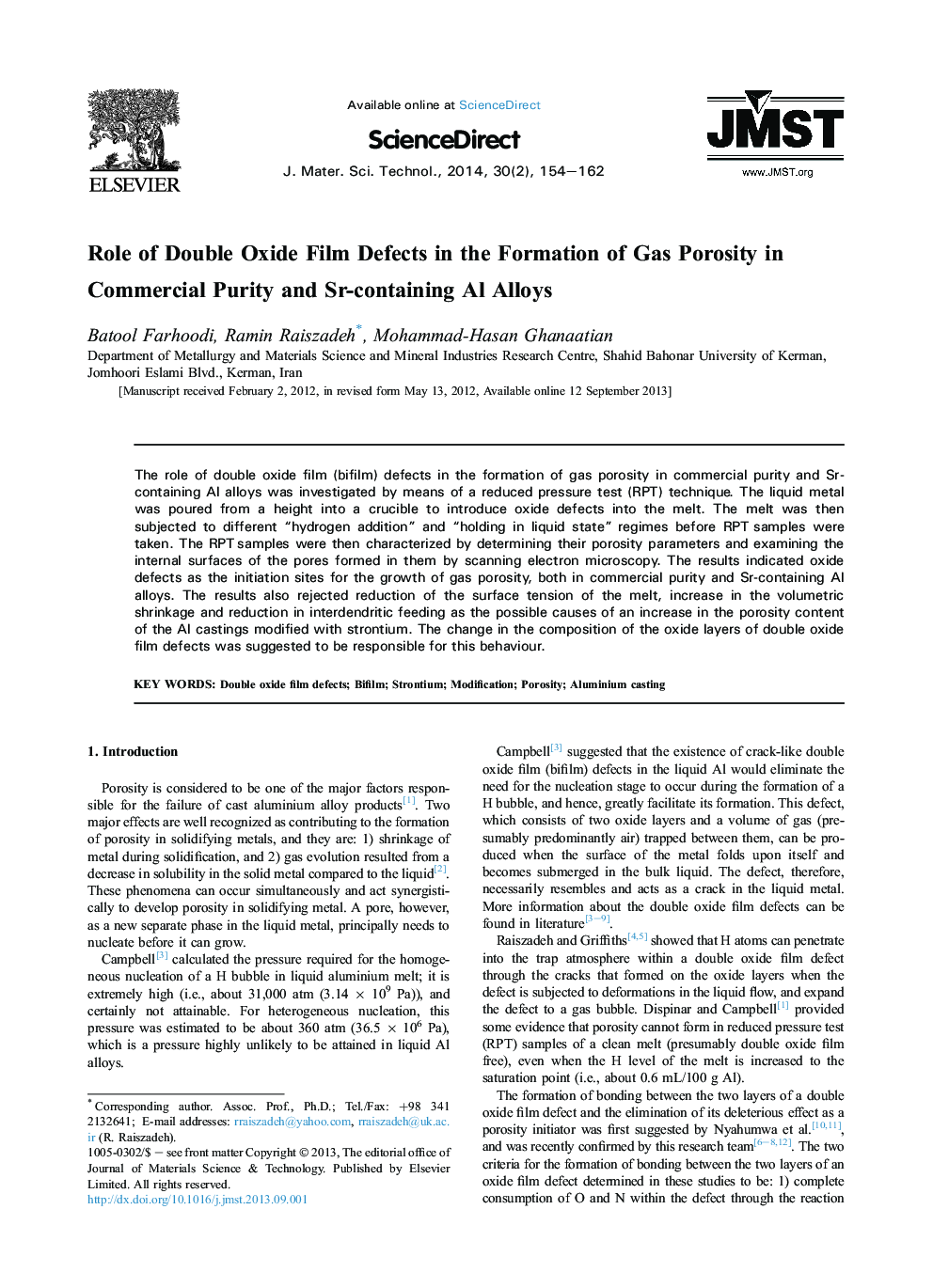| Article ID | Journal | Published Year | Pages | File Type |
|---|---|---|---|---|
| 1556282 | Journal of Materials Science & Technology | 2014 | 9 Pages |
Abstract
The role of double oxide film (bifilm) defects in the formation of gas porosity in commercial purity and Sr-containing Al alloys was investigated by means of a reduced pressure test (RPT) technique. The liquid metal was poured from a height into a crucible to introduce oxide defects into the melt. The melt was then subjected to different “hydrogen addition” and “holding in liquid state” regimes before RPT samples were taken. The RPT samples were then characterized by determining their porosity parameters and examining the internal surfaces of the pores formed in them by scanning electron microscopy. The results indicated oxide defects as the initiation sites for the growth of gas porosity, both in commercial purity and Sr-containing Al alloys. The results also rejected reduction of the surface tension of the melt, increase in the volumetric shrinkage and reduction in interdendritic feeding as the possible causes of an increase in the porosity content of the Al castings modified with strontium. The change in the composition of the oxide layers of double oxide film defects was suggested to be responsible for this behaviour.
Related Topics
Physical Sciences and Engineering
Materials Science
Materials Chemistry
Authors
Batool Farhoodi, Ramin Raiszadeh, Mohammad-Hasan Ghanaatian,
